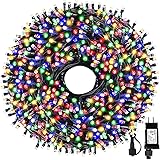Alberta to get 2 new provincial electoral ridings for next election

The Alberta government wants to add two provincial electoral divisions to the map for the next election to accommodate the surge in population over the last several years.
Changes to the Electoral Boundaries Commission Act are part of Bill 31, the Justice Statutes Amendment Act, 2024.
Electoral divisions are determined by an independent electoral boundaries commission. The two new seats would bring the total in the legislature from 87 to 89.
The bill also proposes to change the factors commissioners must look at in determining new boundaries, adding the rate of population growth to the list.
But the bill removes the requirement for divisions to remain within municipal boundaries of Edmonton and Calgary meaning they could have both urban and rural portions.
In the last election, the NDP won the majority of seats in Calgary and Edmonton. The UCP dominated in mid-size cities and rural areas.
Justice Minister Mickey Amery said the change is meant to give commissioners more options — not to change boundaries to benefit the United Conservative Party.
As an example, Amery pointed to residents of Chestermere, who have a close connection to the city of Calgary.
“It’s not mandatory, but it is a permissive amendment to allow them to consider whether it would be appropriate to connect those two communities into a constituency that has one representative,” Amery said. “This is really about flexibility.”
Alberta hasn’t increased the number of ridings since an additional four were added after the boundary commission report of 2009. The province’s population has grown by 33 per cent since then.
MLA Irfan Sabir, the NDP Opposition justice critic, said his party plans to ensure the new seats are distributed properly.
“We expect it’s a fair process and the new ridings are given in the areas where we see the most population and growth pressures and they are not use used for any political gains,” he said.
Under the rules, the population of electoral divisions is allowed to deviate 25 per cent above or below the provincial average.
Nine ridings are outside that limit: Calgary-Buffalo, Calgary-Foothills, Calgary-North East, Calgary-Shaw, Calgary-South East, Edmonton-Ellerslie, Edmonton-South, Edmonton-South West, and Airdrie-Cochrane.
Amery has until October 2026 to appoint a new electoral boundaries commission but he plans to do it sooner rather than later.
The next provincial election will take place in the fall of 2027.
Bill 31 doesn’t just contain amendments to the boundary commission process. If passed, it will enable electronic certification of documents provided to the court, and enable the justice minister to require municipalities and police services to regularly report crime data.
View original article here Source









